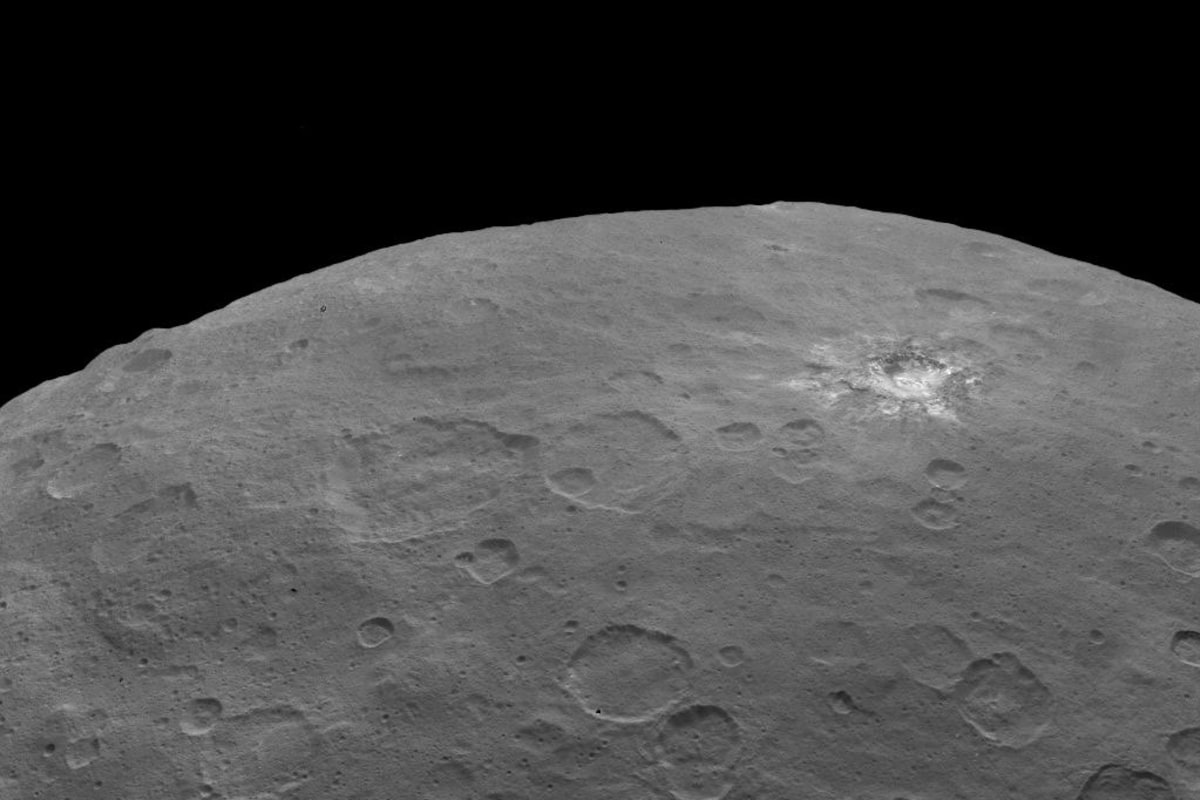A long time ago I was pondering if I will ever live to see the Planet (1)>> Pluto , Thankfully NASA's New Horizons spacecraft is still 24 million miles and more than a month away from the dwarf planet Pluto, but the probe's pictures are already revealing a world that's more complicated than previously thought.I have been waiting for a probe to reach Pluto since Voyager 1. I was very disappointed that neither Voyagers visited the "planet". I would prefer the probe go into orbit but that isn't a possibility at this point. Let's hope there's no glitches or problems during New Horizons brief fling with Pluto and her sisters. Pluto is going to show all of us that it might not be the planet we need right now, but it is the planet we deserve.In fact, since Pluto is quite large enough for the force of its self-gravity to overcome the strength of its icy material, there is no question that it will be very much round, more round than Ceres. (Pluto has the same density as Ceres, so has similar ice/rock composition, but Pluto has more than 14 times Ceres' mass, so its gravity is significantly stronger.) Roundness is one of the very few things that we can confidently predict about Pluto before New Horizons' flyby, because basic physics does a remarkably good job of predicting bulk physical properties of space objects.Pluto was once considered the oddest of the solar system's nine planets, but over the past decade, more objects like Pluto have been discovered on the solar system's icy edge, more than 3 billion miles (5 billion kilometers) from the sun. Now Pluto is considered one of the largest objects in a category known as dwarf planets. The surface of Pluto is coming into focus as NASA’s New Horizons spacecraft gets closer to its flyby next month.A series of new pics snapped by the probe’s on board Long Range Reconnaissance Imager (LORRI) at the end of May and start of June show that Pluto’s has a complex terrain, with very bright and very dark areas as well as grades in between.Telescopic Long Range Reconnaissance Imager (LORRI) on May 29-June 2 captured images showing Pluto to be a multifaceted world with areas of intermediate brightness in between and ultra bright and ultra dark terrain. The captured images are the best views ever obtained of Pluto’s planetary system.A technique called deconvolution was used by New Horizons scientists to sharpen the raw, unprocessed pictures the spacecraft transmits back to Earth. The latest image’s contrast were magnified to reveal additional details. Deconvolution sporadically produce artifacts, so the team will review newer images taken at close range to conclude whether the tantalizing detail seen in the latest released images still persist. Pluto’s non-spherical form in these images is not real; it resulted from the combined image-processing procedure and Pluto’s large disparities in surface brightness.
Pluto's Moons.
 |
| Pluto's moons at long Range . Via Hubble Telescope. |
Ceres and the "Strange Lights".
 |
| The Best Dawn space probe image of Ceres . (see note # 3 ) |
NOTES AND COMMENTS:
(1)>> When the New Horizons spacecraft left the earth in 2006, Pluto was still considered a planet. But a re-examination of the definition of "planet" ended up in the demotion of Pluto to the classification of a "dwarf planet." This was necessary, because observers have discovered a half-dozen icy bodies beyond Neptune as big as or bigger than Pluto. Rather than expanding the number of planets to accommodate what are surely many thousands of bodies like Pluto, scientists opted for clarity and simplicity in classification.It hardly matters. Pluto is a strange, weird place, and the pictures and data that we've already been able to get from New Horizons promise to upend our theories of Pluto and its bizarre moons.(2)>> Charon .What about inside Charon’s orbit? No one thinks that’s exceptionally likely, which is great news for the spacecraft’s safety because it’s scheduled to fly through that region. Information gathered by the Hubble space telescope tells us Nix and Hydra, two moons of the dwarf planet, are embedded in a constantly shifting gravitational field. As a result, Nix and Hydra wobble and tumble unpredictably. (3)>> These latest images come from June 6, when Dawn was orbiting 2,700 miles above the surface of Ceres. It's now clear that this crater (about 55 miles across) is home to a bunch of highly respective white patches, which seem to also exist in less abundance on other parts of the planet. But what are they? These images, while the best we've seen, aren't enough to solve the mystery.(4)>> We have discussed them here and there in recent months, and their luminous power continues to dazzle us. What appeared initially as one fuzzy spot proved to be two smaller spots and now many even smaller regions as the focus has become sharper. Why the ground there reflects so much sunlight remains elusive. Dawn’s finer examinations with its suite of sophisticated instruments in the second, third and then final mapping orbits will provide scientists with data they need to unravel this marvelous mystery. For now, the enigmatic lights present an irresistible cosmic invitation to go closer and to scrutinize this strange and wonderful world, and we are eager to accept. After all, we explore to learn, to know the unknown, and the uniquely powerful scientific method will reveal the nature of the bright areas and what they can tell us about the composition and geology of this complex dwarf planet.

No comments:
Post a Comment